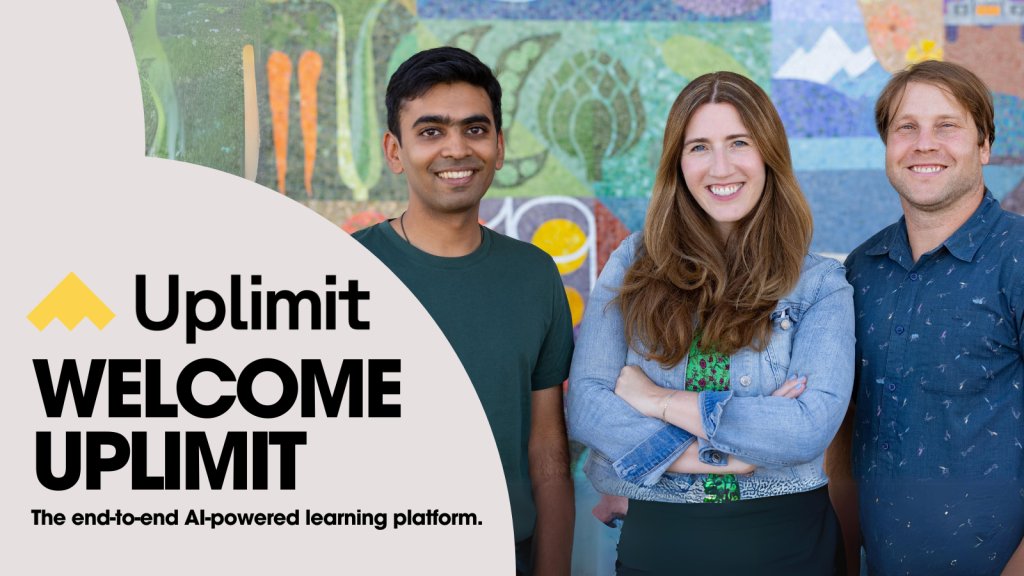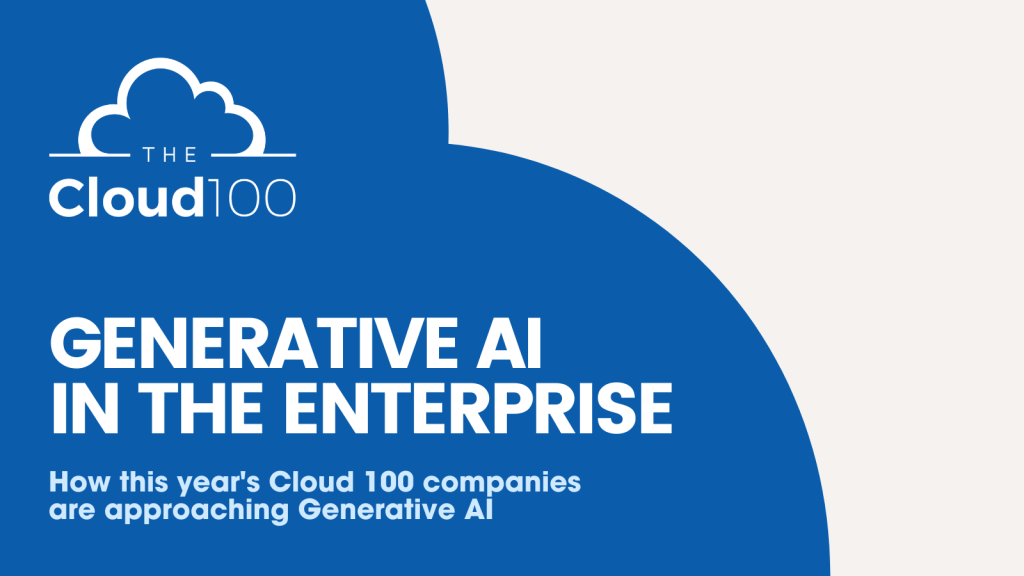

Highlights From Our Cloud 100 Celebration
What we learned at this year’s Cloud 100 celebration.

GENERATIVE AI IN THE ENTERPRISE
How this year’s Cloud 100 companies are approaching Generative AI.

How Databricks and Uplimit are scaling customer education with an AI-first mindset.
AI isn’t just reshaping the products companies deliver — it’s fundamentally changing how customers learn to use them. And as AI technology evolves at a breakneck pace, customer education must evolve too.
Rochana Golani knows this all too well.
After a career leading training, certification, and enablement programs at companies like Google and Amazon, Rochana joined Salesforce Ventures portfolio company Databricks in 2022 as VP of Learning and Enablement. Her mandate: help 10,000+ enterprise customers succeed with Databricks’ Data Intelligence Platform.
“The challenge with customer education today is that things are changing so fast. The market is changing, new AI innovation is coming, and policies are changing, so even things about your product that may have been true a couple of months ago feel antiquated,” Rochana explains. “The solution is learning that’s continuous and that scales, because AI can be disruptive in every industry and every geography.”
To train customers on Databricks’ new AI-powered features quickly, continuously, and en masse, Rochana partnered with another Salesforce Ventures portfolio company: Uplimit. Over the course of their three-year partnership, Uplimit’s AI-powered learning platform has enabled Databricks to deliver a supportive, personalized experience to thousands of Databricks customers around the world.
And the results have been powerful: 80% of users are now completing Databricks’ Uplimit-powered courses, with uniformly positive customer satisfaction scores.
“People learn by practicing and doing and making mistakes and getting feedback,” says Uplimit CEO Julia Stiglitz. “That’s now possible at scale using AI. You can have really interactive, personalized learning experiences, like AI role plays or open-ended assignments where a real human teacher can give you feedback, assisted by AI. These solutions can deploy really quickly and drive real efficacy.”
We sat down with Rochana and Julia to explore how they’re partnering to bring AI-driven education to thousands of customers — and what it takes to scale that learning effectively.

Customer education has always been critical to product adoption. Per the Technology & Services Industry Association (TSIA), companies with mature customer education programs see a 6.2% improvement in product adoption rates compared to those without.
But as AI becomes more embedded in enterprise tools, educating users becomes about so much more than knowing what button to press — it’s about helping them rethink how they work.
“When people think about AI education, they think about it so narrowly in terms of what you need to know to use a tool. But it’s much broader than that,” Julia says. “It’s thinking about how all your work changes, and how your job changes, and what new skills you need to learn to be able to do work as work fundamentally changes.”
For Rochana, AI education is about driving outcomes and increasing productivity: “Our customers want to deliver better outcomes to their customers using data and AI. That only happens if people deeply understand how to integrate these tools into real-world processes.”
High-quality education ensures users experience the value of new AI products, which drives utilization. Julia and Rochana emphasized that AI’s pervasiveness means AI education can no longer be optional. Workers must understand what AI is, how it changes their work, and how they should think about AI tools.
“Because AI unlocks so much more, you have to be educated to even think about the art of the possible,” Rochana says.
Scaling AI education in an AI-driven world introduces a unique set of challenges:
Uplimit’s platform is designed for speed, scale, and interactivity. Human instructors can design, review, and oversee courses and learner interactions, while AI assists with personalizing content, automating feedback loops, and delivering real-time learner support (e.g., targeted nudges if the student falls behind).
This hybrid approach is critical to Databricks. “We still control the ‘what’ and ‘how’ of the content,” says Rochana. “We test everything with instructors. But AI helps us scale support, streamline content creation, and improve response time for learners.”
“A lot of what we’ve built has been AI with a human in the loop,” adds Julia. “Our tools allow individual instructors to serve thousands of people, as opposed to only 20 or so at a time.”
Traditional self-paced learning courses (e.g., instructional videos) often see dismal completion rates, typically under 10%. But using Uplimit, Databricks is seeing completion rates closer to 80%. And it’s not just about finishing a course — it’s about learning in a way that sticks.
Uplimit’s platform allows Databricks to personalize courses based on job roles, the location of the learner, and even their language. “If you look back hundreds of years, the best high-quality education focused on the learner and making the content specific to them,” Julia says. “The holy grail of ed tech has always been tutor-level outcomes through technology. With AI, we’re finally getting there.”
By combining AI with expert instructors, Databricks can now scale personalized customer education dramatically, without sacrificing quality. “I don’t have a scale problem anymore,” Rochana says. “Now, we can personalize learning at scale in a way that stretches and develops every learner.”
Databricks’ journey with Uplimit started with a pilot. “We were thoughtful about testing it with a key partner and customer,” Rochana says. “Once we saw the results, we expanded — and now Uplimit is a core part of what we offer customers.”
All in, Databricks spent two years slowly rolling out Uplimit’s offering to a broader swath of their users, ensuring customer satisfaction every step of the way. This methodical approach — starting small, validating results, then scaling — can serve as a blueprint for any organization readying to embrace AI in customer enablement.
“We spent a lot of time ensuring we test out our courses with real instructors before we go out and give them to users,” Rochana says. “Taking time at the start of this journey ensures you can move a lot more quickly once you deploy.”
For companies interested in AI-powered customer education, both Julia and Rochana recommend starting with a small pilot steered by an organization champion with a vision for scaling the program.
“You need someone who can understand the art of the possible,” Rochana says. “Educate yourself on what’s possible with platforms like Uplimit, and then try it out, because that’s the best way to learn.”
Julia also recommends that leaders pitch the business case for AI-powered education, which includes increased utilization of your product and tapping into new markets.
“It can’t be AI for AI’s sake, there has to be an ROI to it,” Julia says. “Where we’ve deployed at scale, leaders have been able to make that case and drive really great results.”
_
To learn more about Databricks’ and Uplimit’s partnership, read their case study. To get more Salesforce Ventures content delivered directly in your inbox, sign up for our newsletter >>>